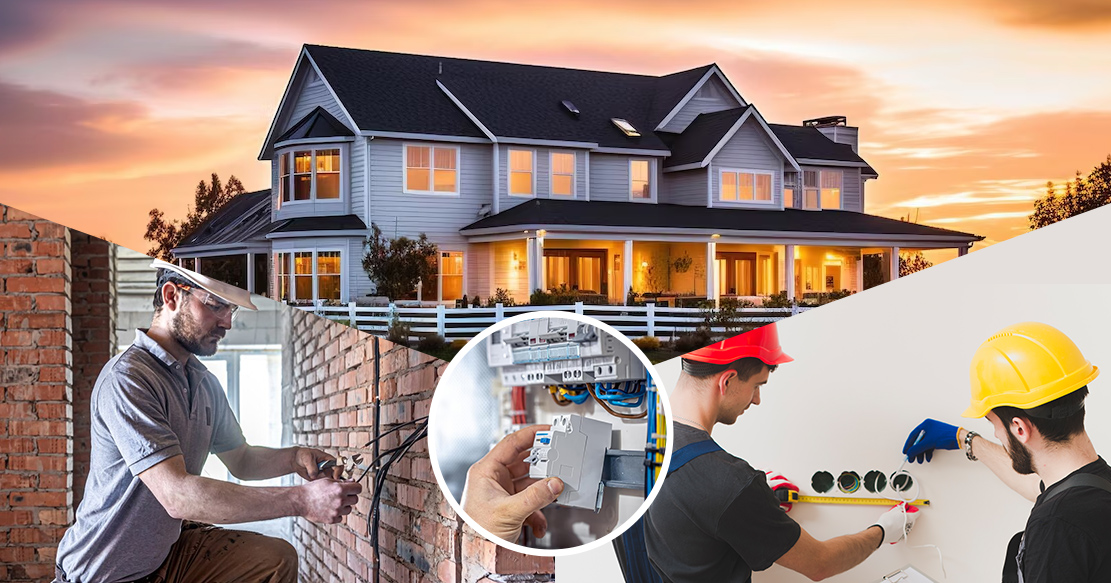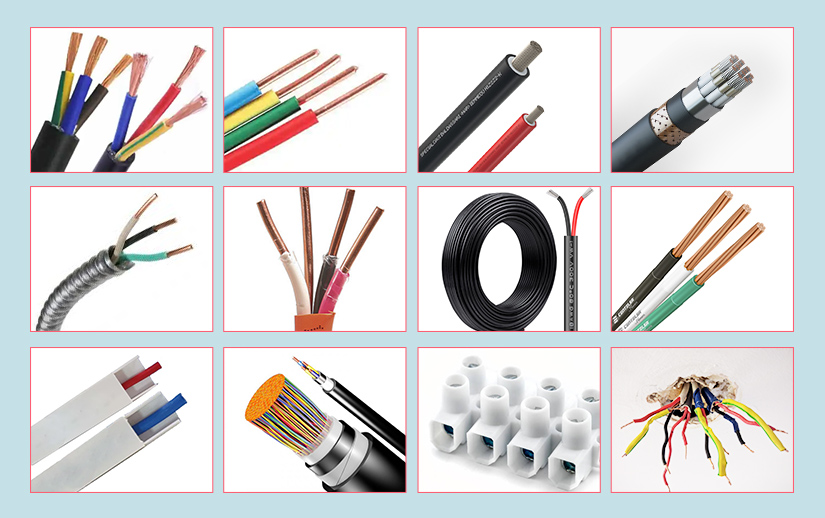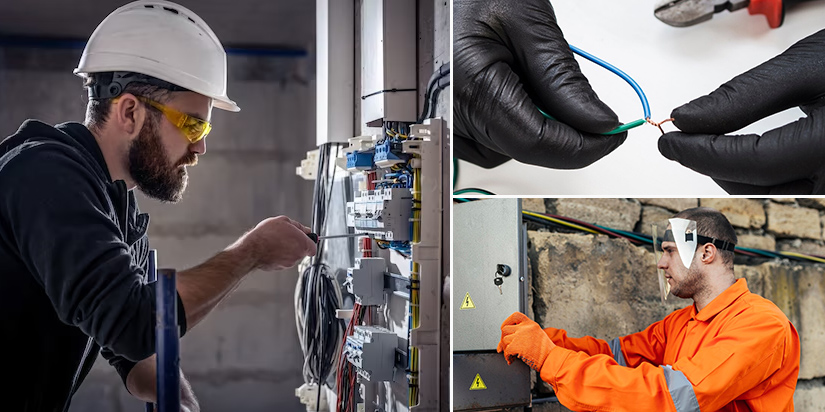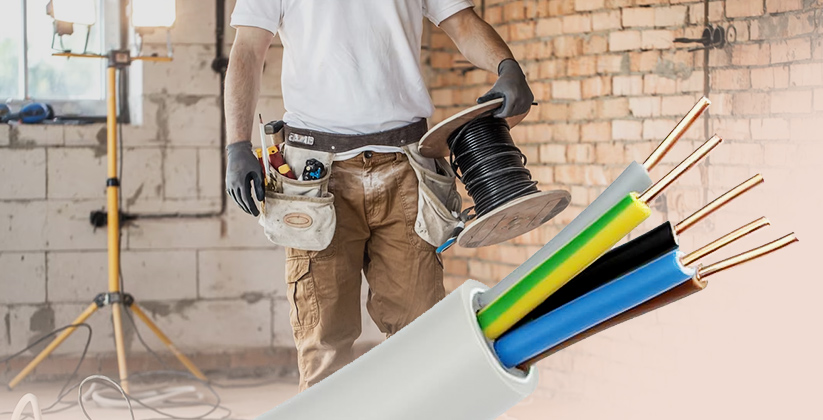
Electrical Wiring and Their Types for Residential Buildings
Electrical wiring is the building block of any power system in any residential building. The electrical safety of a building from any electrical shocks, fires, or other hazard largely depends on its electrical wiring. An efficient, reliable, and safe electrical wire connection to our home requires proper wiring devices, wires, and cables.
Electrical wiring of any building depends on several factors such as type of building, safety, cost, voltages, flexibility, easy maintenance, etc. Different types of electrical wiring are Tree systems, loop-in- system, NM cables, armoured cables, etc., suitable for domestic wiring depending on our requirements.
The domestic range of wires and cables manufactured by Gloster Cables meets different factors for domestic application.
Introduction to Electrical Wiring
An electric wiring system is a network of wires that connects various electrical devices to distribute electrical energy from the supplier meter board to various electrical energy-consuming devices, like lamps, fans, and other domestic appliances. The electrical wiring system distributes electricity through regulating and safety devices.
The electrical power distribution using wires and cables needs to be optimized to meet the electrical as well as economic requirements of a location. Wires and cables connected to the electric supply methodically ensure less power supply interruption. A properly installed electrical wiring in a structure improves load control and distribution.
Different Types of Electrical Wiring

The electrical wiring used for residential buildings or domestic purposes is as follows.
 Tee System or Joint Box System
Tee System or Joint Box System
A tee system or joint box system helps connect appliances. The system uses less amount of cable and is
perfect for temporary installations. The connections are made in joint boxes using suitable connectors
or joints.
It is inexpensive but has certain disadvantages. When a fuse in one distribution blows, it disconnects all
other appliances connected with that distribution. It requires different sizes and current capacities of
plugs and sockets, and the wiring has more copper losses.
 Loop-in-System
Loop-in-System
Loop-in-system should set up the lighting and other appliances in parallel, allowing each device to be controlled separately. Lamps are other appliances connected in parallel to control each appliance individually. This type of wiring is universally in use for residential buildings.
 Cleat Wiring
Cleat Wiring
Cleat wiring uses a system of cleats to secure insulated wires in place and lay them out in the electrical grid. The wiring is PVC or VIR insulated wires, braided and placed on the walls and ceilings using porcelain cleats, wood, or plastic. This type of wiring is suitable for temporary settings like construction sites.
 Casing and Capping Wiring
Casing and Capping Wiring
Casing and capping wiring involves placing PVC insulated wires in plastic casing and covering them with a cap. The wiring is preferable for household wiring, wire distribution, and protection to other wiring systems, offices, and devices with low voltage use.
 Lead Sheathed Wiring
Lead Sheathed Wiring
The wiring has electrical sheathed wires with an outer sheathed consisting of a 95 percent lead alloy aluminum alloy. The cable is air corrosion-resistant & moisture-protected, safe from mechanical damage because of its covering.
 Conduit Wiring
Conduit Wiring
Conduit wiring uses pipes or tubing to run wires. The conduits are made from plastic or metal and used in exposed locations like basements, exterior wall surfaces, outdoors, etc. They are more durable, corrosion resistant, shield EMI, and protective than surface wiring.
 NM Cable
NM Cable
NM cable is also known as Romex cable. The cable contains three or more individual conductors wrapped in a sheathing and a flexible plastic jacket. NM cable is suitable for dry and interior home wiring, such as appliances, fixtures, switches, and outlets. The outer jacketing of the cable comes in different colors to indicate the wire gauge.
 Armoured Cable
Armoured Cable
Cables need to meet local ordinances rather than national codes in case of electrical wiring. In such areas, AC cables are preferred over armored cables. AC wiring is designed with flexible metallic sheathing, bringing extra protection for the inside conductors. AC wiring is suitable for residential buildings with less than three stories.
 Underground Feeder (UF) Cable
Underground Feeder (UF) Cable
UF cable is specific for wet locations and underground burials. The cable contains insulated hot and neutral wires and a bare ground wire. It has a solid plastic sheathing around each wire and has a grey outer sheathing. UF cable is suitable for supplying outdoor fixtures and circuit wiring.
 Low-Voltage Wire
Low-Voltage Wire
Circuits that use less than 50 volts use low-voltage wire. It is suitable for doorbells, thermostats, sprinkler items, landscape lighting, and where there is a need for low electricity. LV wiring varies from 12 to 22 gauge and is insulated or covered in cable sheathing.
 THHN/THWN Wire
THHN/THWN Wire
THHN and THWN are the most common insulated wire types, unlike NM cables. These cables have a single conductor with color-coded insulation. The cable is plastic or tubular metal conduit protected. These wires are for areas like the basement, garages, and inside the house for short exposed runs such as water heater wiring connections or garbage disposal.
Importance of Electrical Wiring for Domestic Power System

Proper electrical wiring of your building ensures smooth appliance functions and safety against potential hazards. A few important factors we need to ponder to avoid any electrical mishap are as follows.

We should consider several factors like insulation, material, size, current capacity, strands, and cable type before selecting any cable for domestic purposes.

Prefer copper wires above aluminum and wires with multiple strands. Flame-retardant low smoke and low halogen flexible cables are made of 99.7% copper, enabling the highest conductivity and lesser heating issues. These cables have triple-layer insulation, improved FR PVC grades, and focussed electrical and mechanical properties.

Select unbreakable, non-corrosive housings and quick-change components for heavy-duty electrical assemblies to keep moisture away. PVC-insulated cables prevent the oxidation of copper cables. It keeps the cable more durable than regular wires.

We need to avoid mixing up neutral wires, leaving hot wire hanging, making the circuit breakers weak, etc., to avoid potential electrical hazards.
Select Gloster Cables to Ensure the Safety and Performance of Your House

Gloster Cables, a wire and cables manufacturer, provides a wide range of wires and cables for domestic purposes. Gloster manufactures triple-layer ZHFR cables, triple-layer FRLSH cables, low voltage cables, underground feeder cables, and many more to ensure electrical safety and optimum electrical supply at your home. The cables manufactured at Gloster undergo stringent quality tests to bring optimum performance.
CONTACT US